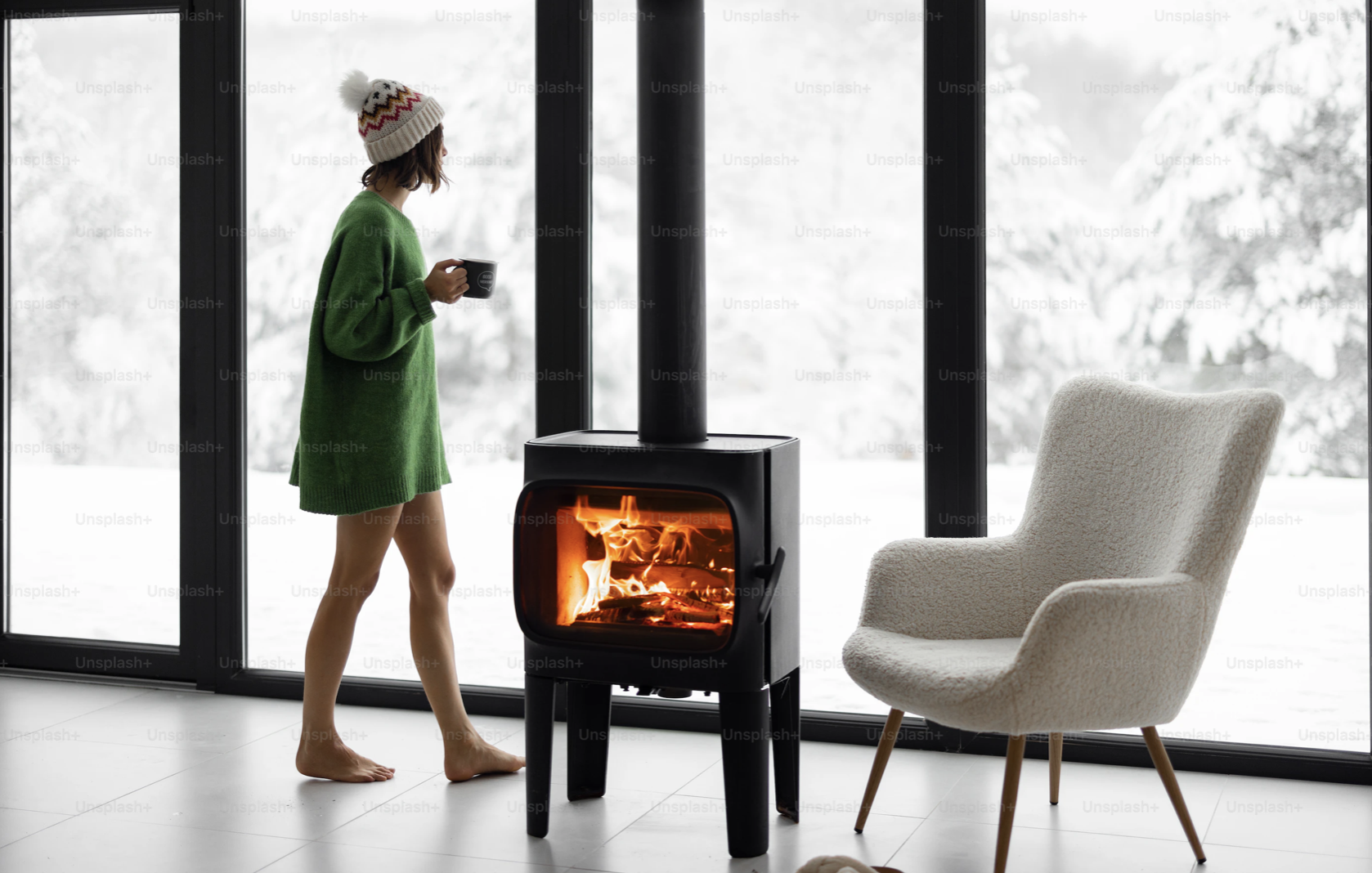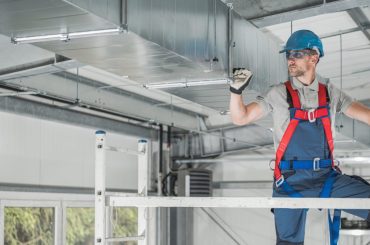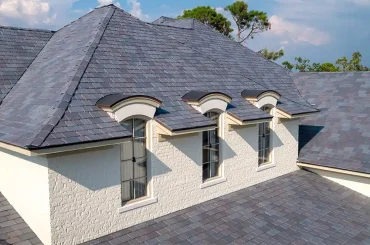Table of Contents
As the temperature drops, keeping your home warm and cozy becomes a top priority. However, cranking up the heat can result in high energy bills. Fortunately, there are effective ways to make your home warmer this winter without breaking the bank.
One of the most important steps to take is to ensure that your home is properly insulated. Insulation helps to prevent heat from escaping, keeping your home warmer and reducing your energy bills. Check your attic, walls, and floors to make sure that they are adequately insulated. If you find that your insulation is lacking, consider adding more to improve its effectiveness.
Another effective way to make your home warmer this winter is to seal any drafts. Drafts can let cold air in and warm air out, making it more difficult to keep your home warm. Check for drafts around windows and doors, as well as any other areas where there may be gaps or cracks. Sealing these areas can make a big difference in keeping your home warm and reducing your energy bills.
In the quest for a cozy and efficient home, the choice of heating is paramount,” shares Christine Matthews from the online stove and fireplace store Gr8Fires. “Woodburning stoves not only offer a sustainable and cost-effective way to warm your space but also add a timeless charm. Choose the right stove for your needs to maximise heat distribution and ensure your home remains a haven of warmth and style.
Loft Insulation
One of the most effective ways to make a home warmer during the winter is to properly insulate the loft. Loft insulation is a simple and cost-effective solution that can significantly reduce heat loss and lower energy bills.
There are several types of loft insulation available, including mineral wool, glass wool, and natural materials such as sheep’s wool. The thickness of the insulation will depend on the recommended level for the specific type of insulation being used.
By insulating the loft, homeowners can reduce heat loss by up to 25%, which can lead to significant savings on energy bills. In addition, loft insulation can help to keep a home cooler in the summer by preventing heat from entering the living space.
It is important to ensure that loft insulation is installed correctly and to the recommended thickness to maximize its effectiveness. Homeowners can choose to install loft insulation themselves or hire a professional to complete the job.
Overall, loft insulation is a simple and effective way to make a home warmer during the winter months while also reducing energy bills and improving energy efficiency.
Sealing Windows and Doors
One of the most effective ways to make your home warmer this winter is to seal your windows and doors. Sealing the gaps around windows and doors can prevent cold air from entering your home and warm air from escaping. This can not only make your home more comfortable, but it can also save you money on your energy bills.
There are a few different ways to seal your windows and doors. One option is to use weatherstripping, which is a material that can be applied to the edges of windows and doors to create a seal. Weatherstripping can be made from a variety of materials, including foam, vinyl, and metal. It is important to choose the right type of weatherstripping for your windows and doors, as different materials are better suited for different applications.
Another option is to use caulking to seal any gaps around your windows and doors. Caulking is a material that can be applied to the gaps between windows and doors and the surrounding frame. It can be used to seal gaps that are too large for weatherstripping or in areas where weatherstripping is not practical.
In addition to weatherstripping and caulking, there are a few other things you can do to seal your windows and doors. For example, you can add draft stoppers to the bottom of your doors to prevent cold air from entering your home. You can also use window film to create an additional layer of insulation around your windows.
Overall, sealing your windows and doors is a simple and effective way to make your home warmer this winter. By taking the time to seal any gaps and cracks, you can create a more comfortable living environment and save money on your energy bills.
Using Thermostats Wisely
One of the most effective ways to make your home warmer this winter is to use your thermostats wisely. Thermostats are essential devices that help regulate the temperature of your home. Here are a few tips on how to use your thermostats effectively:
- Set your thermostat to the lowest comfortable temperature: The lower the temperature, the less energy you will use and the more money you will save on your energy bills. The recommended temperature for winter is 68°F (20°C). If you feel cold, put on a sweater or use a blanket.
- Use a programmable thermostat: A programmable thermostat allows you to set the temperature of your home according to your schedule. You can set it to lower the temperature when you are away from home and raise it when you return. This can help you save up to 10% on your energy bills.
- Don’t turn off your thermostat completely: Turning off your thermostat completely can cause your pipes to freeze, which can lead to expensive repairs. Instead, set your thermostat to a lower temperature when you are away from home.
- Use a smart thermostat: A smart thermostat can learn your preferences and adjust the temperature of your home accordingly. It can also be controlled remotely using your smartphone, which can be convenient if you forget to adjust the temperature before leaving home.
By using your thermostats wisely, you can make your home warmer this winter while also saving money on your energy bills.
Efficient Heating Systems
When it comes to keeping your home warm during the winter, having an efficient heating system is crucial. Here are some options to consider:
- Gas Furnaces: Gas furnaces are a popular choice for heating homes. They use natural gas to heat air, which is then distributed throughout the home via ductwork. Gas furnaces are known for their efficiency and cost-effectiveness.
- Electric Furnaces: Electric furnaces are another option to consider. They work by heating air and then blowing it through the ductwork. While they are generally less efficient than gas furnaces, they can be a good choice if you don’t have access to natural gas.
- Heat Pumps: Heat pumps are becoming increasingly popular as a heating option. They work by extracting heat from the outside air and distributing it throughout the home. While they are less efficient in colder climates, they can be a good choice in milder climates.
- Boilers: Boilers are another option to consider. They work by heating water, which is then distributed throughout the home via radiators or baseboard heaters. While they can be more expensive to install, they are generally more efficient than furnaces.
No matter which type of heating system you choose, it’s important to have it installed and maintained by a professional. Regular maintenance can help ensure that your system is running efficiently and can help prevent costly repairs down the road. Additionally, for Carrier furnace owners, sourcing genuine Carrier furnace parts is essential to maintain optimal performance and longevity.
Home Layout and Design
The layout and design of a home can have a significant impact on its ability to retain heat during the winter months. Here are a few things to consider when trying to make your home warmer:
- Room location: Rooms that are located on the north side of the house tend to be colder than those on the south side. If possible, try to spend more time in the south-facing rooms during the day and close off any unused rooms on the north side.
- Insulation: Proper insulation is essential for keeping a home warm. Inspect the insulation in the attic, walls, and floors to ensure that it is in good condition and not damaged. If the insulation is insufficient, consider adding more.
- Windows: Windows are a significant source of heat loss in a home. Consider replacing old, drafty windows with energy-efficient ones. Alternatively, apply weatherstripping or caulking to seal any gaps around the windows.
- Flooring: Bare floors can be cold and uncomfortable during the winter months. Consider adding area rugs or carpeting to help insulate the floors and keep them warmer.
- Furniture placement: The placement of furniture can affect the airflow in a room. Avoid placing furniture in front of heating vents or blocking radiators with large pieces of furniture.
By considering these factors, homeowners can make their homes more comfortable and energy-efficient during the winter months.
Conclusion
In conclusion, there are several effective ways to make your home warmer this winter. By following some of the tips mentioned in this article, you can save money on your heating bill and create a more comfortable living space for you and your family.
One of the most important things you can do is to ensure that your home is properly insulated. This can help to prevent heat from escaping and keep your home warmer for longer. Adding weather stripping to doors and windows can also help to prevent drafts and keep the cold air out.
Another effective way to keep your home warm is to use a programmable thermostat. This can help you to regulate the temperature in your home more efficiently, saving you money on your heating bill. You can also consider using space heaters in areas where you spend the most time, rather than heating your entire home.
Finally, don’t forget to take advantage of natural sources of heat, such as sunlight. Keep your curtains and blinds open during the day to let the sun in, and close them at night to keep the heat inside.
By following these simple tips, you can make your home warmer and more comfortable this winter without breaking the bank.





